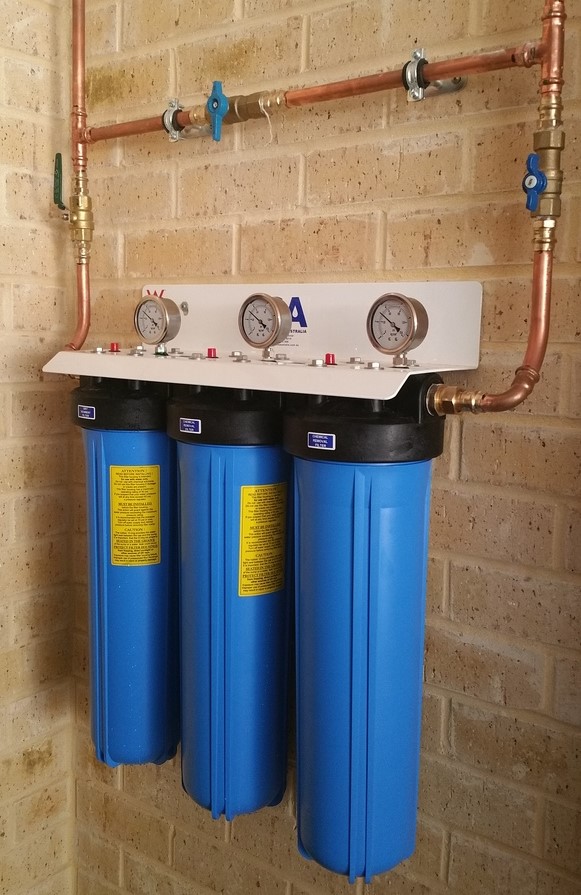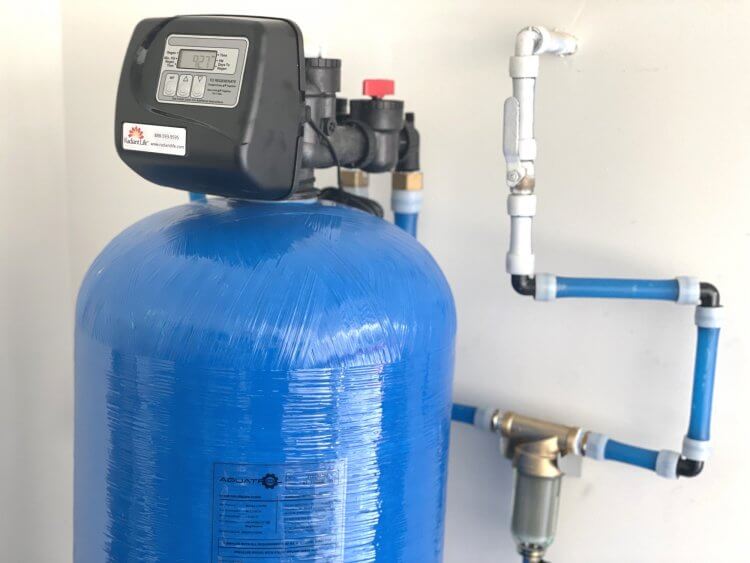Putting In a Whole-House Water Filter Is a Clear Choice
Putting In a Whole-House Water Filter Is a Clear Choice
Blog Article
Have you been on the lookout for selective information concerning What are the Benefits of Using a Whole House Water?

Entire house water filters are the excellent choice for individuals that are interested in having a house that gives clean, drinkable water. In addition to offering high quality drinking water throughout your home, a whole home water filter additionally provides advantages such as removing contaminations that create spotting in water that is utilized to wash meals. Unfiltered water can additionally cause problem such as rusting pipes as well as devices, destroying apparel that is washed and also tarnish sinks or showers. Although whole home water filters are usually used in domestic houses, they can likewise be a reliable alternative for houses or offices.
At first, it might appear that whole home water filters would certainly be exceptionally expensive when contrasted to various other filter options, but they are really a really cost-effective alternative for water filtration. The cost variety of these water filters is huge, starting at two hundred dollars as well as setting you back as much as one thousand dollars. The cost of the filters depends on their size, material and life expectancy. This might seem like a very high cost, yet when compared with other filter alternatives, it is actually very affordable because of the amount of filtering system that it gives.
Whole home water filters cleanse water in the very same style that other filters, such as countertop or under sink filters, do. The distinction is that it needs just one filter, which is attached to the main water source, rather than requiring multiple water filters to be connected to various tools. As with the other filters, whole home water filters cleanse faucet water by forcing it via numerous different stages of filtration. One of the stages is carbon filtering. Carbon is an effective method of filtering water since it is porous as well as has the capability to eliminate small and large impurities. Carbon is essential in getting rid of unstable organic carbon compounds, which in some cases can create significant damages to the liver, kidney or main nerve system. Carbon likewise removes dangerous materials such as chemicals, commercial solvents as well as insecticides.
Another essential step of the purification process includes a process such as ionization or micron filtration. This step gets rid of numerous pollutants found in faucet water, as well as transforms the water to wonderful sampling, healthy drinking water. As stated earlier, the main benefit of entire residence water filters are that they offer filtered water throughout the house with using only one filter.
An additional benefit of whole residence water filters is the lengthy life expectancy that they offer. Most of these filters last in between fifty and one hundred thousand gallons of water. For several, the primary disadvantage of whole residence filters is the more than average rate. Although these filters are extremely affordable, they do call for a big investment in advance. Whole residence water filters can likewise require a significant quantity work to mount.
How to Remove Iron Bacteria from Well Water
If your drinking water comes from a private well, you will likely experience issues with iron in your water. These issues can range from poor-tasting coffee to bright orange streaks in toilets and bathtubs. However, there’s an equally familiar but less understood problem linked to iron contamination: iron bacteria, also known as “iron-eating” or “iron-oxidizing” bacteria.
Iron is one of the most abundant minerals in the earth’s crust. As a result, elevated levels of iron are usually widespread in the groundwater that serves wells, often fostering the growth of iron bacteria in well water. These organisms can combine oxygen with iron, manganese, or other nutrients in the water to form a swampy sludge containing rust deposits, bacterial cells, and other organic and inorganic matter. This slimy residue then sticks the bacteria to pipes, pumps, plumbing fixtures, and appliances, causing clogging, foul tastes and odors, corroded pipes and plumbing fixtures, etc.
Well-water systems used infrequently or intermittently are typically more prone to iron bacteria problems. To make matters worse, removing these organisms from your water can be complicated, which is why we recommend taking steps to prevent them from forming in your well in the first place. Luckily, this article explains a highly effective way to remove iron bacteria from well water. Let’s start by discussing what iron bacteria are and how they get into well water.
Signs of Iron Bacteria in Water
If your household water supply is contaminated with iron bacteria, you might notice several unappealing signs that may indicate iron bacteria presence. These signs may include:
Stains and deposits on plumbing fixtures, pipes, and appliances
One of the most common indicators of iron bacteria in well water is stains and deposits on plumbing fixtures, pipes, and appliances. Water containing these organisms will leave rust-colored slime stains and deposits in sinks and toilets and inside well casings. You’ll also notice stains on fixtures, tableware, laundry, and various surfaces, that keep coming back no matter your cleaning method or efforts. These stains can be grey, yellow, or brown but are often a reddish-orange rust-like color.
Discoloration
Water containing iron bacteria can have a yellow, red, or orange hue. Further, visible deposits that have a clumpy or slimy consistency are very likely to have been caused by the presence of iron bacteria. Iron bacteria deposits are widespread in toilet tanks. In many cases, the deposits will take the form of a slimy coating along the walls of the tank. If the bacteria have been in the water for a lengthy period, the deposits could float in the water.
Oily sheen on the water surface
A quick and easy way to check for the presence of iron and other slimy-producing bacteria is to look in the water closet tank of your toilet. If you see an oily sheen on the surface of the water and can feel a slimy residue on the inside of the tank, slime-producing bacteria are likely present in your water system. If you use disinfectant in your tank, evidence of these conditions might not be so apparent.
https://www.springwellwater.com/how-to-remove-iron-bacteria-from-well-water/

As a serious reader on What is a Whole House Water Filter and How Does It Work?, I assumed sharing that editorial was sensible. Are you aware of somebody else who is fascinated about What is a Whole House Water Filter and How Does It Work?? Feel free to share it. Kudos for your time. Kindly stop by our site back soon.
Prices & Booking
Report this page